 W
WAlice in Borderland is a 2020 Japanese science fiction thriller drama streaming television series based on the manga of the same name by Haro Aso. Directed by Shinsuke Sato, the series stars Kento Yamazaki and Tao Tsuchiya as allies trapped in an abandoned Tokyo where they are forced to compete in dangerous games, the type and difficulty of which are determined by playing cards. After surviving their first game, players receive "visas," which are extended the more they compete; if the visas expire, the individuals are executed by red lasers being shot from the sky.
 W
WB-Fighter Kabuto is a Japanese television series in the Metal Hero Series franchise. It is the sequel to Juukou B-Fighter, taking place five years after the preceding B-Fighter series. Kabuto aired from 1996 to 1997. The action footage and props were used for the Beetleborgs Metallix series.
 W
WBattle Athletes is a Japanese franchise which includes an OVA series animated by AIC, a manga by Yūki Nakano, and a 26-episode anime television series that aired on TV Tokyo from October 1997 to March 1998.
 W
WBlue SWAT is the thirteenth installment in the Metal Hero Series franchise. It ran from January 30, 1994 to January 27, 1995 for a total of 51 episodes and one theatrical film, aired as part of the 1994 Manga Matsuri, which compiled episodes 1 and 2. Blue SWAT deviated from the Metal Hero trend by using a realistic vibe for the series instead of fantastic, over-the-top action by focusing on the martial arts and gunplay aspects of the series. While the mood of the series appealed to the genre's adult fanbase and older viewers, the show was not well received by children, which resulted in a change into a lighter tone midway through the series. The Blue SWAT team later appeared for a special team-up in the final episodes of Juukou B-Fighter.
 W
WBakuryū Sentai Abaranger is Toei's twenty-seventh production of the Super Sentai metaseries, and the first series to use TV Asahi's current logo. It aired as a part of TV Asahi's 2003 Super Hero Time block with Kamen Rider 555. The series is based on dinosaurs and explosions. Its action footage was used in Power Rangers Dino Thunder. In addition, episode 10 in nearly its entirety was used for episode 19 of Power Rangers Dino Thunder as an English-dubbed show that the Dino Thunder Power Rangers discover on television.
 W
WChōjin Sentai Jetman is a Japanese tokusatsu television series produced by Toei Company and Bandai. It is the fifteenth entry of the Super Sentai metaseries, following the previous series Chikyu Sentai Fiveman. The series aired on TV Asahi on February 15, 1991, to February 14, 1992, with a total of 51 episodes. It is the last Sentai series until Ressha Sentai ToQger to not get adapted into a Power Rangers series. It was also the first series to have a third robot, Tetra Boy.
 W
WChouriki Sentai Ohranger is a Japanese tokusatsu television series and the 19th installment in the long-running Super Sentai metaseries of superhero programs. It is the second ancient civilization-themed Super Sentai, preceded by Dai Sentai Goggle-V. Its footage was used in the American series, Power Rangers Zeo.
 W
WChouseishin Gransazer , translated into English as Ultra Instint Star Gods and the GranSazers or Super Star Gods and the GranSazers or also known as only GranSazers, is a tokusatsu superhero TV series, produced by Toho Company Ltd., and Konami. The series aired on TV Tokyo from October 4, 2003, to September 25, 2004, with a total of 51 half-hour episodes. This series is the first of Toho's "Seishin " series.
 W
WDancouga Nova – Super God Beast Armor is a Super Robot anime television series, produced by Ashi Productions and is directed by Masami Ōbari, who was also in charge of mechanical design. The series is supposedly a follow up of its predecessor, Dancouga – Super Beast Machine God. The series premiered across Japan on the Japanese CS television network Animax, and also TV Tokyo on 15 February 2007, spanning a total of 12 episodes.
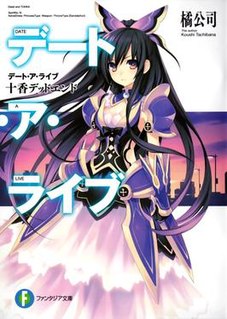 W
WDate A Live is a Japanese light novel series written by Kōshi Tachibana and illustrated by Tsunako. Fujimi Shobo published 22 volumes from March 2011 to March 2020 under their Fujimi Fantasia Bunko imprint. Yen Press holds the license to publish the light novel in English.
 W
WDenji Sentai Megaranger is Toei's twenty-first production of the Super Sentai metaseries, and the Second Sentai where all heroes are high school students. The footage was also used in the American series, Power Rangers in Space. Megaranger premiered on February 14, 1997, and concluded on February 15, 1998.
 W
WGasaraki (ガサラキ) is a mecha anime television series produced by Sunrise. It was directed by Ryousuke Takahashi, who also co-created the series along with Sunrise. Goro Taniguchi was the assistant director. The screenplay was written by Toru Nozaki.
 W
WGekisou Sentai Carranger is a Japanese tokusatsu television show. It was Toei's twentieth production of the Super Sentai metaseries. It is the second vehicle-themed Super Sentai, preceded by Kousoku Sentai Turboranger. The show was written as a parody of its own franchise. Its action footage was used in Power Rangers Turbo.
 W
WGenerator Gawl is a 1998 12-episode anime television series produced by Tatsunoko Productions and the Victor Company of Japan. The story is set in 2007, when Professor Takuma Nekasa uncovers a gene code that will unlock the human body's greatest mystery and expose mankind to its greatest threat. As a result, Gawl, Koji, and Ryo—three young scientists from a future period—have traveled back in time to undo this mistake. Though the trio intended to arrive one year before the calamity, they are instead transported three months prior to the event. In their effort to save the world, they are opposed by the mysterious and cunning Ryuko Saito, a scientist who prefers the future as it is. Saito is assisted by Generators, unearthly assassins posing as humans. As Ryo and Koji try to complete their mission, Gawl himself must "generate"—becoming like his enemies to fight on their terms.
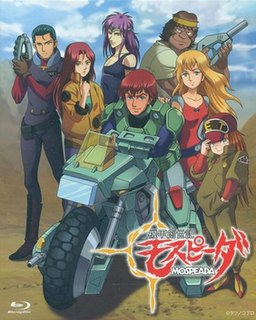 W
WGenesis Climber MOSPEADA is an anime science fiction series created by Shinji Aramaki and Hideki Kakinuma. The 25-episode television series ran from late 1983 to early 1984 in Japan. MOSPEADA stands for Military Operation Soldier Protection Emergency Aviation Dive Armor, one of the transformable motorcycle-armors the series features. The other primary mecha featured in the show is the three-form transformable fighter called the Armo-Fighter AFC-01 Legioss. MOSPEADA was adapted as the third generation of the American series Robotech, much like Macross and Southern Cross.
 W
WGiant Robo , also known as Johnny Sokko and His Flying Robot in the United States, is a manga and tokusatsu series created by Mitsuteru Yokoyama. It is similar to Yokoyama's Tetsujin 28-go, but Giant Robo has more elements of fantasy. The original 26-episode tokusatsu TV series, produced by Toei Company, aired on NET from October 11, 1967 to April 1, 1968.
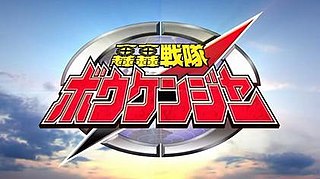 W
WGoGo Sentai Boukenger is the 30th series in Toei's Super Sentai series, a metaseries of Japanese tokusatsu programming. It is the first installment to be broadcast in 16:9 aspect ratio. It premiered on February 19, 2006 at 7:30 JST on TV Asahi's 2006 Super Hero Time programming block with Kamen Rider Kabuto. Its footage was used in the American series, Power Rangers Operation Overdrive in SD, while the original footage was dubbed into Korean for the South Korean series, Power Rangers Treasure Force.
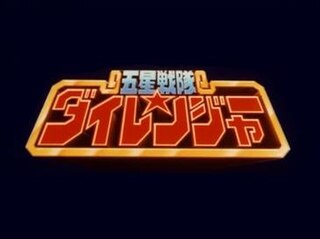 W
WGosei Sentai Dairanger is a Japanese tokusatsu television series. It was the seventeenth production in the long-running Super Sentai metaseries of television tokusatsu dramas produced by Toei Company, following Kyōryū Sentai Zyuranger. It was originally broadcast from February 19, 1993, to February 11, 1994. Toei gave this series the name Star Rangers for international distribution.
 W
WDenkou Choujin Gridman , known as Gridman the Hyper Agent in some English-speaking territories, is a 1993–1994 Japanese tokusatsu "Giant Hero" series created by Tsuburaya Productions and would be Tsuburaya's last non-Ultra superhero production before Bio Planet WoO. It was the inspiration and source material for DiC Entertainment's Superhuman Samurai Syber-Squad.
 W
WHyakujuu Sentai Gaoranger is Toei's twenty-fifth production of the Super Sentai metaseries airing in 2001 and celebrated the franchise's 25th anniversary. Footage from this show was used in the 2002 American series Power Rangers Wild Force and was later dubbed in 2010 as the retitled Power Rangers: Jungle Force for South Korean television in place of Samurai Sentai Shinkenger. Gaoranger aired alongside Kamen Rider Agito.
 W
WJuken Sentai Gekiranger is Toei Company's thirty-first entry in the Super Sentai metaseries. Production began on September 29, 2006 with principal photography beginning on October 6, 2006. It premiered on February 18, 2007 on TV Asahi's 2007 Super Hero Time programming block with Kamen Rider Den-O, and concluded its airing on February 10, 2008.
 W
WJuukou B-Fighter , is a 1995 Japanese tokusatsu television series. B-Fighter is short for "Beetle Fighter". It was part of Toei's Metal Hero Series franchise. It dealt with three members of the prestigious Earth Academia fighting against the evil forces of the otherworldly Jamahl Empire. The action footage and props were used for Big Bad Beetleborgs and it has a sequel called B-Fighter Kabuto.
 W
WKaiba (カイバ) is a Japanese science fiction anime television series created, written, and directed by Masaaki Yuasa and produced by Madhouse. It was broadcast for twelve episodes on WOWOW from April to July 2008. It is licensed in North America by Discotek Media and in the United Kingdom by Anime Limited. Its story revolves around an enigmatic character named Warp and takes place in a psychedelic world mixed with a space-opera universe where the change of body, the traffic of memories, are possible.
 W
WKyōryū Sentai Zyuranger is a Japanese tokusatsu television series and the sixteenth installment in the long-running Super Sentai metaseries of superhero programs. Produced by Toei and Bandai, it aired on TV Asahi from February 21, 1992 to February 12, 1993, with a total of 50 episodes. It was the first Sentai series to have a regular Sixth Ranger, and the first to introduce the concept of sentient, living mecha—a theme that has been used frequently in the franchise ever since. It was also the first Sentai series to be adapted into an installment of the American Power Rangers series. Footage from all 50 episodes was extensively used for the first season of Mighty Morphin Power Rangers. The core Zyuranger costumes were used in all three seasons of Mighty Morphin Power Rangers and were used as the original Power Rangers costumes while the Dragon Ranger costume was adapted into the Green Ranger's costume and was used throughout Season 1 and in early Season 2. The title Toei gives this series for international distribution is Galaxy Rangers.
 W
WKyuukyuu Sentai GoGoFive is the twenty-third entry of the long-running Japanese Super Sentai metaseries. Its footage was used in the American television series, Power Rangers Lightspeed Rescue.
 W
WMinna! Esper Dayo! is a 2013 Japanese twelve-part science fiction comedy television miniseries adapted from the seinen manga series Minna! Esper Dayo! written and illustrated by Kiminori Wakasugi. It aired on TV Tokyo from April 12 to July 5, 2013. The show's theme song is Japanese-language song "(Where's) The Silent Majority?" by the Japanese singer-songwriter Yu Takahashi. It was followed by a 2015 TV special titled All Esper Dayo! SP.
 W
WMirai Sentai Timeranger is a Japanese Tokusatsu television series and the 24th series in Toei's Super Sentai metaseries. Footage from this series was used in the American production Power Rangers Time Force. The opening narration of the series announces, "People from the future in the year 3000 AD and one man have met by chance, for the sake of marking a new passage of time…!" . Timeranger was released on DVD by Shout! Factory in North America on July 31, 2018. This is the 9th Super Sentai Series to be released on Region 1 DVD in North America. The series debuted on February 13, 2000, when it replaced Kyuukyuu Sentai GoGoFive in TV Asahi's 7:30 JST time-slot, joining the recently-debuted Kamen Rider Kuuga in what would 3 years later become the Super Hero Time programming block.
 W
WThe Mobile Sherrif Jiban is a Japanese tokusatsu television series which serves as the 8th entry in the Metal Hero Series franchise, and the first entry in the Heisei period. It is also the first series to have toy commercials that were filmed on Videotape. Produced by Toei and aired by TV Asahi in Japan from January 29, 1989, to January 28, 1990, it ran for 52 episodes and a feature movie aired on July 17, 1989. According to Toei's International Sales & Promotion Department, the series' English title can be referred to as Jiban.
 W
WNational Kid is a Japanese TV series produced by Toei Company in 1960. Broadcast on NET, it was sponsored by Panasonic, then known as Matsushita Electric, to promote the National brand. Although not very famous in Japan, the series has obtained cult status in Brazil, where it was very popular.
 W
WNinja Sentai Kakuranger is a Japanese tokusatsu television series. It was Toei Company Limited's eighteenth production of the Super Sentai metaseries. The name given to this series by Toei for international distribution is Ninja Rangers.
 W
WNinpuu Sentai Hurricaneger is Toei's twenty-sixth production of the Super Sentai metaseries. The catchphrase for the series is "Unknown even to others, unknown even to the world, we become shadows to defeat evil!" . Its footage was used in the American series, Power Rangers Ninja Storm. On April 1, 2013, Shun Shioya, Nao Nagasawa, Kohei Yamamoto, Yujiro Shirakawa, and Nobuo Kyo, who played Hurricane Red, Hurricane Blue, Hurricane Yellow, Kabuto Raijer, and Kuwaga Raijer, respectively, announced that a 10th-anniversary V-Cinema release called Ninpuu Sentai Hurricaneger: 10 Years After would be produced. This is the first time a movie has been made commemorating the anniversary of a single Sentai series. The movie is a direct to DVD and Blu-ray release. Shout! Factory released Ninpuu Sentai Hurricaneger: The Complete Series in North America on March 26, 2019. This is the twelfth Super Sentai series to be released in North America. It joined Kamen Rider Ryuki.
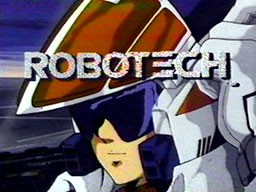 W
WRobotech is an American 85-episode adaptation of three unrelated Japanese anime television series made between 1982–1984 in Japan; the adaptation was aired in 1985. Within the combined and edited story, Robotechnology refers to the scientific advances discovered in an alien starship that crashed on a South Pacific island. With this technology, Earth developed giant robotic machines or mecha to fight three successive extraterrestrial invasions.
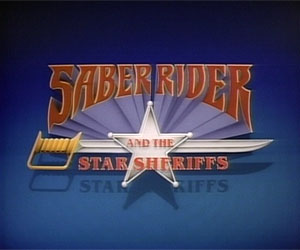 W
WSaber Rider and the Star Sheriffs is an animated television space Western, similar to the series The Adventures of the Galaxy Rangers and BraveStarr. The series premiered in the United States in 1987 and had a run of 52 episodes.
 W
WSeijuu Sentai Gingaman is a Japanese tokusatsu television series. It is Toei's 22nd entry of the Super Sentai metaseries. The series aired from February 22, 1998, to February 14, 1999. Its footage was used in Power Rangers Lost Galaxy. The lead screenwriter for the series is Yasuko Kobayashi.
 W
WSengoku Jieitai Sekigahara No Tatakai is a 2006 television series mainly based on the Sengoku Jieitai movie in 1979 and the 2005 movie Sengoku Jieitai 1549. Its director, Kōsei Saitō, had been involved in the creation of the Sengoku Jietai 1979 movie.
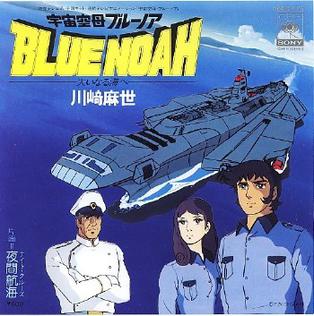 W
WSpace Carrier Blue Noah is a science fiction anime television series produced by Office Academy which ran in Japan from October 13, 1979 through March 30, 1980. It was later distributed overseas in English by West Cape Corporation under the name "Thundersub". The series was called "Nave Anti-Espacial" in many Spanish-speaking countries.
 W
WSpace Sheriff Sharivan is the second installment in Toei's Metal Hero Series franchise and aired on TV Asahi from March 4, 1983 to February 24, 1984. It served as a direct sequel to its predecessor, Space Sheriff Gavan and featured many of the same characters.
 W
WSpecial Rescue Police Winspector is a Japanese tokusatsu TV series, part of the Metal Hero Series franchise and the first piece of the Rescue Police Series trilogy. The series follows the adventures and missions of a special "Rescue Police" team known as Special Police Winspector, as they stop crimes and respond to dangerous events where regular police force is not sufficient. The team is made up of one human and two robotic assistants.
 W
WStar Blazers 2199, known in Japan as Space Battleship Yamato 2199 , is a 2012–2013 Japanese military science fiction anime television series that is a remake of the first Space Battleship Yamato television series created by Yoshinobu Nishizaki and Leiji Matsumoto in 1974, known in the United States as Star Blazers. The series is a space opera, and was originally screened back-to-back in theaters across Japan, a few episodes at a time prior to release on home video, and aired on television from April 7, 2013 to September 29, 2013. Voyager Entertainment currently licensed the series outside Japan, with Funimation streaming their English dub of the series starting on November 8, 2017.
 W
WStar Blazers 2202, known in Japan as Space Battleship Yamato 2202: Warriors of Love , is a Japanese military science fiction animated film series produced by Xebec, and the sequel to Star Blazers: Space Battleship Yamato 2199, originally based on the Space Battleship Yamato television series created by Yoshinobu Nishizaki and Leiji Matsumoto. It is directed by Nobuyoshi Habara and written by Harutoshi Fukui with official character designs by Nobuteru Yuki. The first film of the series was released simultaneously in Japanese theaters and streaming services starting February 25, 2017. Similar to the first film series, the second loosely adapts both the animated series Space Battleship Yamato II and the movie Arrivederci Yamato.
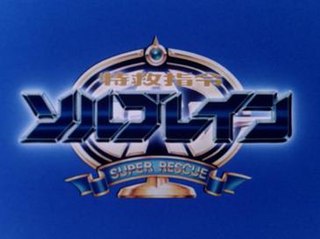 W
WSuper Rescue Solbrain is a Japanese tokusatsu television series produced by Toei Company. It ran for 53 episodes from January 20, 1991 to January 26, 1992 on TV Asahi. It is part of the Metal Hero Series franchise; a sequel to Special Rescue Police Winspector, it is the second series in the Rescue Police Series trilogy.
 W
WToki o Kakeru Shōjo is the second live-action television adaptation of the novel of the same name. It aired as a five-episode Japanese television live-action TV series broadcast on Fuji Television between February 19 and March 19, 1994, directed by Masayuki Ochiai and Yūichi Satō, with screenplay by Ryōichi Kimizuka and music by Joe Hisaishi. It stars the then-rookie idol Yuki Uchida in the main role, and also features the writer of the original book, Yasutaka Tsutsui, and the then-unknown idols Miho Kanno, Ranran Suzuki and her then-rabbit-cosplayed-partner in the children TV show Ponkikies: future J-pop star Namie Amuro. The series' theme song is "Mermaid" by Nokko.CastYuki Uchida as Kazuko Yoshiyama Yoshihiko Hakamada as Kazuo Fukamachi Gamon Kaai as Gorō Asakura Ranran Suzuki as Mariko Kanda Miho Kanno Leo Morimoto Namie Amuro Yasutaka Tsutsui Kyoko Yoshizawa B-saku Sato Yoko Moriguchi
 W
WTokusou Robo Janperson is a 1993 installment in Toei Company's Metal Hero Series franchise. The series revolved around Janperson, a robotic detective who patrolled the streets of Tokyo and fought against three different underworld organizations who used super technology to subjugate the masses. Unlike most Metal Heroes, a monster-of-the-week was rarely shown and most of the villains are criminals akin to television police dramas. The name given to this series by Toei for international distribution is Jumperson.
 W
WTokusou Sentai Dekaranger is the title given to the promotional material for the twenty-eighth production of the Super Sentai metaseries produced by Toei. It aired as a part of TV Asahi's 2004 Super Hero Time block with Kamen Rider Blade. The action footage from the show was used for the American series, Power Rangers S.P.D..
 W
WUltra Q is a tokusatsu science fiction kaiju series made in the tradition of Toho's many tokusatsu sci-fi/horror films.
 W
WUltraman is a Japanese tokusatsu science fiction television series created by Eiji Tsuburaya. It is a follow-up to Ultra Q, though not technically a sequel or spin-off. Tsuburaya Productions produced 39 episodes that aired on Tokyo Broadcasting System (TBS) from July 17, 1966 to April 9, 1967. Its premiere topped the average rating set by Ultra Q and kept climbing each week, marking the show as a success.
 W
WUltraman Nexus was produced by Tsuburaya Productions, Chubu-Nippon Broadcasting (CBC), and Dentsu. It was the 18th entry in the Ultra Series. The series aired on Tokyo Broadcasting System, including TBS, CBC, MBS, etc. The show ran from October 2, 2004 until June 25, 2005, with a total of 37 broadcast episodes. Subsequent DVD releases from Bandai Visual saw a brand new 45-minute Episode EX and an extended 45-minute Director's Cut of Episode 29.
 W
WUltraman: Towards the Future, released in Japan as Ultraman Great , is a Japanese–Australian tokusatsu science fiction television series produced as a co-production between Tsuburaya Productions and the South Australian Film Corporation. It is the 10th installment in the Ultra Series, the first series to be produced during Japan's Heisei period and the third foreign production in the franchise after Ultraman: The Adventure Begins.
 W
WUltraseven is a Japanese tokusatsu science fiction television series created by Eiji Tsuburaya. It is the third installment in the Ultra Series and was produced by Tsuburaya Productions. The series aired on Tokyo Broadcasting System from October 1, 1967 to September 8, 1968.